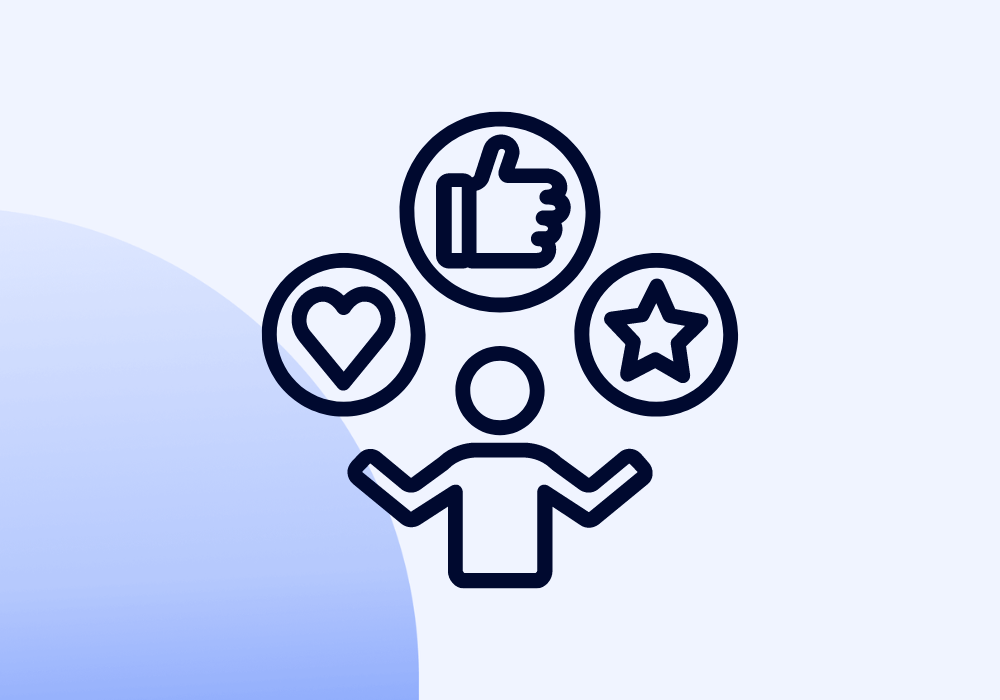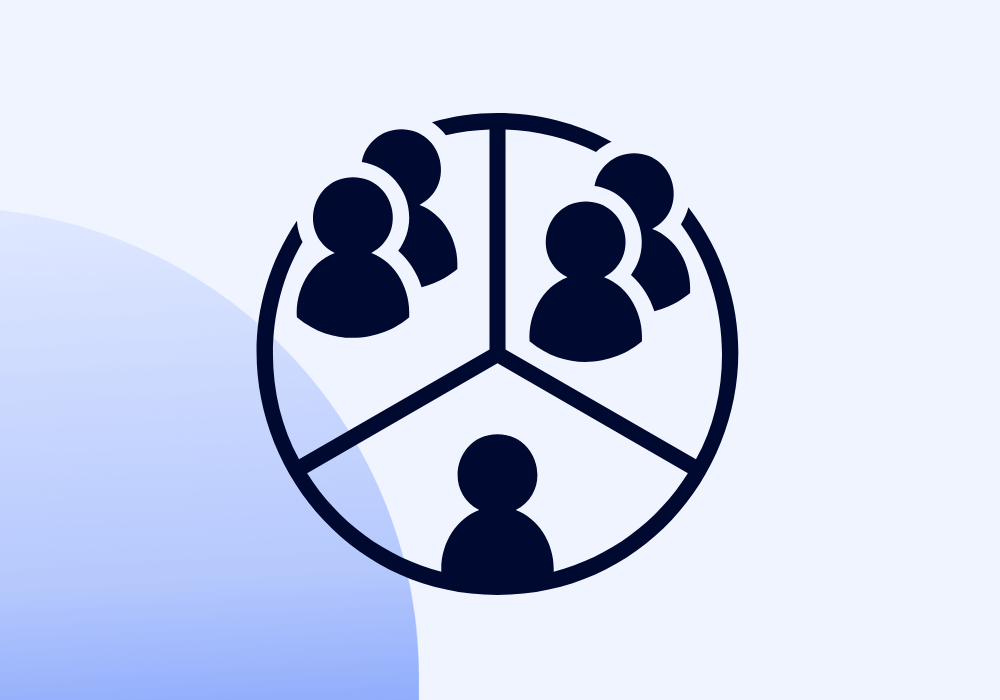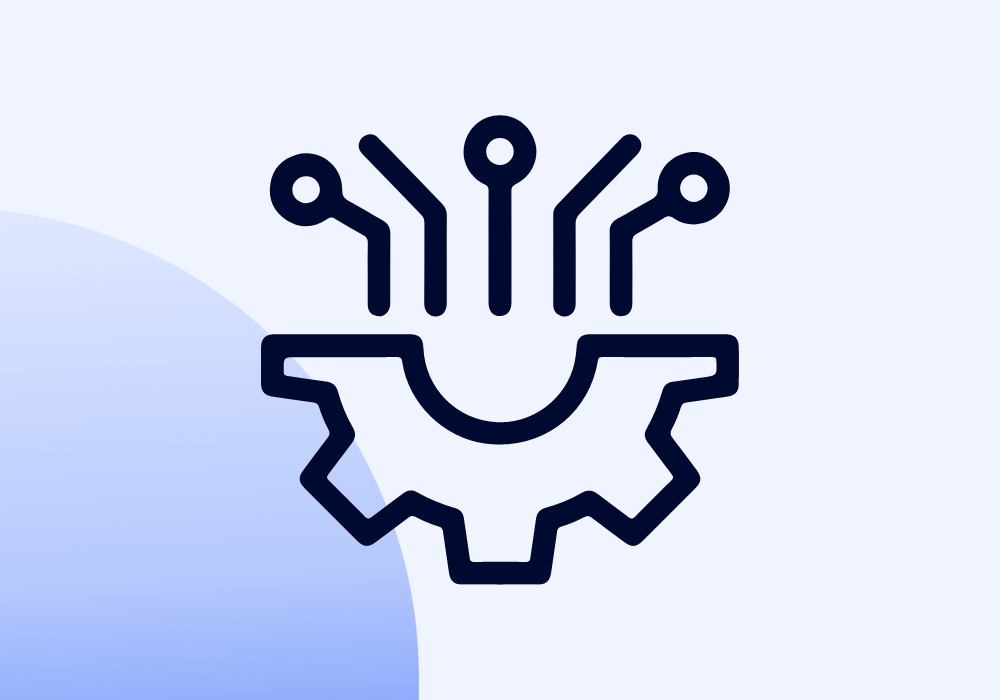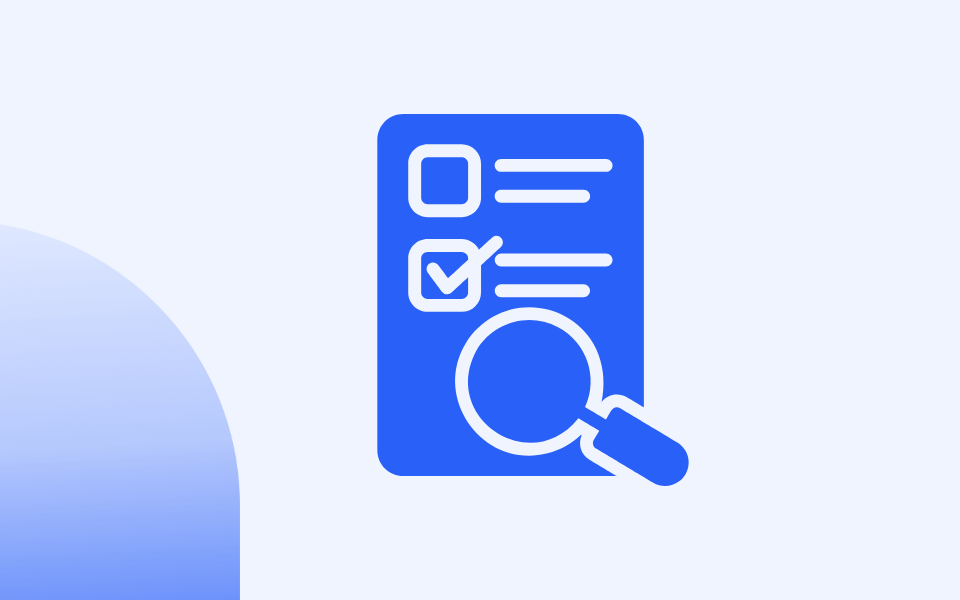B2B Market Segmentation: A Step-by-Step Guide for Marketers
How to Make an Ideal Customer Profile (ICP): A Step-by-Step Guide

Are your marketing efforts scattered? Developing an ideal customer profile (ICP) can help you reduce the noise and focus on the right prospects.
Marketers must manage tight budgets, higher expectations, and constant pressure to generate more opportunities. By defining your ICP, you can select to focus on the companies most likely to close.
An ICP helps you zero in on the companies that are the perfect fit for your product or service so you can spend less time chasing unqualified leads and more time closing deals.
Key Takeaways:
- An Ideal Customer Profile (ICP) helps identify the companies and contacts that best fit your product or service.
- An ICP streamlines marketing and sales by focusing on high-value prospects, increasing conversions, and reducing wasted resources.
- Unlike buyer personas, ICPs focus on company and individual characteristics, while buyer personas focus on individual roles within the company.
- Components of an ICP include firmographics, relevant keywords, and an understanding of the buying committee within the target company.
- Creating a well-defined ICP allows for better-targeted outreach, personalized messaging, and higher ROI for B2B businesses.
Imagine knowing which companies to target, their biggest challenges, and how to speak their language. You will save time and see better results—more conversions, higher retention, and a more substantial ROI.
- What is an Ideal Customer Profile?
- Why is an ICP Essential for B2B Businesses?
- What’s the Difference Between an ICP and Buyer Personas?
- Why Do You Need an Ideal Customer Profile?
- Four Critical Components of an B2B ICP
- Most Common Mistakes When Creating an ICP
- How to create an Ideal Customer Profile (ICP)
- Conclusion: Take Your Marketing to the Next Level with an ICP
In this guide, I’ll explain what an ICP is, why it’s essential for B2B marketing, and how to create one. By the end, you’ll have everything you need to attract the right customers and turn them into loyal clients.
What is an Ideal Customer Profile (ICP)?
An Ideal Customer Profile (ICP) consists of three key elements:
Ideal refers to identifying the type of customers that best fit your business. Customer means it's based on insights from your existing customer base, and Profile is the documented overview that consolidates learnings from multiple customers to guide your strategy.
Many marketers have a misconception about ABM and how listing companies that could become customers or compiling a list of lost deals is enough to declare that this is their ICP.
This is insufficient if you want to implement an Account-Based Marketing (ABM) strategy.
Having a smaller, focused list is better than spending resources on companies that will never be bought or unprofitable.
Instead of targeting anyone who *might* buy, focus on the companies most likely to convert.
Account-based marketing leverages tactics you already use, like content marketing, paid ads, outbound sales, and social media—but the key is knowing which companies to pursue.
An Ideal Customer Profile (ICP) defines the companies that best fit your product or service based on characteristics like industry, revenue, or size.
Why does this matter? When you know the right companies to target, you can focus your efforts on high-value prospects, spending less time guessing and more time closing deals.
Why is an ICP Essential for B2B Businesses?
An ideal customer profile (ICP) isn’t just a nice-to-have—making your marketing and sales efforts count is essential. Here’s why:
1. Get New Customers
Instead of wasting time trying to appeal to everyone, an ICP helps you focus on prospects already an excellent fit for your brand. You’ll spend less time chasing leads that go nowhere and more time closing deals with companies that need what you offer.
2. Keep Existing Customers
With an ICP, you can customize support, onboarding, or ongoing success efforts to meet the needs of your ideal customer. This personalized attention leads to stronger relationships and helps reduce churn.
3. Upsell Existing Customers
Your ICP also shows you opportunities to upsell to your current customers. When you understand what makes your best customers happy, it’s easier to offer them more value, boosting their engagement and increasing their spend with you.
The Difference Between an ICP and Buyer Personas
Mixing up Ideal Customer Profiles (ICPs) with buyer personas is easy, but some key differences exist. Understanding this distinction is crucial for executing more precise marketing strategies.
An ideal customer profile (ICP) focuses on the companies that best fit your product or service.
It covers the company’s characteristics, like size, industry, revenue, and the key players involved in the buying process. In a B2B sale, you’re not just convincing one person—you’re influencing multiple stakeholders within a company, often called the “buying committee.”
On the other hand, buyer personas focus on individual people within a company, not the company itself. Buyer personas can be helpful but often include irrelevant information like hobbies or marital status that don’t affect the buying decision.
They also need more details about the company and how you can influence their decision-making process.
The bottom line?
While buyer personas can help understand individual roles, an ICP gives you a complete picture of the company and its decision-makers. This is critical to targeting the proper accounts in B2B sales.
Why Do You Need an Ideal Customer Profile (ICP)?
An ideal customer profile (ICP) is a game-changer for any B2B marketer looking to fine-tune their strategy.
Instead of trying to appeal to everyone, you can zero in on the companies and individuals who align perfectly with your offering. Let’s break it down:
1. Focus
With an ICP, you’ll stop wasting resources on low-potential leads that don’t match your product or service. Instead, you’ll focus on the companies meeting your ideal criteria, saving time and money. This way, your team can prioritize where they put their efforts and see a better return on investment (ROI).
2. Personalization
Once you know your ideal customers, you can fine-tune your messaging to speak directly to them. Whether it’s your marketing campaigns or sales outreach, the more relevant and personalized your content, the higher your chances of converting those leads.
3. Select the Right Channels
An ICP also helps you determine where your target customers spend their time. Are they more active on LinkedIn? Do they attend specific industry conferences? Knowing where to focus your outreach can help you reach the right people at the right time.
4. Qualification/Disqualification
An ICP acts as a filter for your sales and marketing teams. It helps you determine which companies should be on your radar and which to disqualify early. This keeps your team from chasing leads that are unlikely to convert and helps streamline your entire sales process.
5. Budgeting
When implementing an ABM strategy, apply the 80/20 principle to optimize for attracting and winning the 20% of companies that account for 80% of your revenue.
For example, you could base this on your ten best customers and try to find more like them. Instead of focusing on 500 or 1000 companies, you may only need to focus on 200.
6. Upselling
Account-Based Marketing (ABM) is not just for winning high-value customers; it’s also an excellent strategy for increasing customer satisfaction and retaining your most valuable customers.
In B2B, a few companies can account for significant revenue. Therefore, you can use many of the same ABM principles to acquire and retain customers.
Use an ICP to identify the most valuable companies in your contact database and ensure they receive personalized follow-ups to stay long-term customers.
7. Reporting
Once you’ve defined your ICP, your entire sales and marketing process becomes more focused on attracting, winning, and retaining buyers most likely to purchase.
Since you proactively qualify the companies you want to win, this shifts the marketing department's focus from traffic and leads to key metrics (KPIs) closer to sales and revenue.
Four Critical Components of an Ideal Customer Profile
To build a solid ideal customer profile (ICP), you must define a few key components that give you a complete view of your ideal customers.
These go beyond basic details and help you understand the companies and the people driving buying decisions.
Firmographics
Firmographics are the essential characteristics of a company that helps you decide if they fit your ICP. Key factors include:
- Industry: What sector does the company operate in (e.g., healthcare, technology)?
- Revenue: A company’s revenue indicates whether they can afford your product or service.
- Company Size: This could mean the number of employees or the size of the company’s reach geographically.
Keywords
Look at how companies talk about themselves—their products, services, and industry. Aligning your messaging with their language can make a big difference.
Tools like Clay allow you to use AI to scan websites for specific keywords related to your industry.
For example, suppose you’re selling underwater drones for port inspections.
In that case, you can use firmographics (such as company revenue and size) and keywords like “port inspection” to find companies that are a good fit. This keeps your targeting precise and relevant.
Buying Committee
In B2B, decisions are rarely made by one person. Your ICP should describe the buying committee—the group of people within a company who have a say in the purchasing decision. Typically, the buying committee includes:
- Champions: The internal advocates for your product.
- Decision-makers: The people with the final approval power.
- Influencers: Those whose opinions carry weight but don’t make the final call.
- Blockers: People who might resist your solution or delay the decision process.
Next, for each member of the buying committee you need to add the following information:
- Age: How long has the company been in business, or have vital individuals been in their roles?
- Job Roles: Know who you’re talking to and their specific role in the buying process.
- Channels: Understand where your audience is active—LinkedIn, email, or industry events.
- Challenges: What problems are they trying to solve that your product can help with?
- Strategic Goals: Knowing the company’s big-picture goals will help you position your solution more effectively.
- Reasons to Buy: What’s driving the purchase? Is it about cutting costs, improving efficiency, or something else?
Account Tiering
Segmenting accounts into tiers helps focus campaigns on high-value companies and personalize approaches for different prospects. Accounts are categorized by revenue potential:
- Tier 1: High ACV or LTV accounts that generate significant growth, requiring highly personalized 1:1 campaigns.
- Tier 2: Medium ACV or LTV accounts, needing less personalization but targeted campaigns based on industry or job role.
- Tier 3: Low revenue potential accounts, suited for automated or inbound marketing rather than manual outreach.
Most Common Mistakes When Creating an ICP
Building an ideal customer profile (ICP) can transform your marketing efforts only if done correctly.
Here are some common mistakes to avoid, along with tips on how to sidestep them:
1. Mixing Customers from Different Segments
Combining data from multiple market segments into one ICP quickly results in something too broad to be helpful.
When you mix companies with very different characteristics, your ICP loses focus and precision.
Focus on one market segment at a time. Build a separate ICP tailored to each segment's unique needs and challenges.
2. Targeting Too Many Market Segments at Once
Spreading yourself too thin by trying to target multiple market segments simultaneously can lead to generic messaging that doesn’t resonate with anyone. When you try to be everything to everyone, you appeal to no one.
Start with one or two market segments. Create an ICP for each and concentrate your marketing efforts on those. As your business grows, you can continually expand to new segments.
3. Not Talking to Real Customers
It’s easy to assume you know what your customers want, but you're just guessing if you’re not talking directly to them. Assumptions can lead to an ICP that doesn’t reflect your audience’s needs.
Interview your actual customers or prospects from the segment you’re targeting. Ask them about their pain points, how they make decisions, and what motivates them to buy. Use that feedback to refine your ICP.
4. Relying Only on Firmographics
Firmographics like industry, company size, and revenue are important, but they don’t tell the whole story. Focusing only on these factors will leave you with an incomplete picture of your ideal customer.
Go deeper by adding psychographics, buying behavior, and details about the buying committee. Understanding who makes the decisions and their pain points will help create an ICP that drives conversions.
5. Ignoring the Buying Committee
In B2B, purchases usually involve more than one decision-maker. Ignoring the roles of champions, decision-makers, influencers, and blockers can result in an ICP that doesn’t account for the complexity of the buying process.
Your ICP should always include a detailed description of the buying committee. Understanding who is involved in the decision-making process will help you target the right people with the right message.
6. Assuming You Know the Buying Process
Assuming you know how your customers buy without checking the facts can lead to missed opportunities. Each company has its unique buying process, and it’s critical to understand.
Don’t guess—gather data directly from your customers or prospects. Analyze sales calls and emails and conduct interviews to learn how their buying journey unfolds.
How to create an Ideal Customer Profile (ICP)
1. Identify Your Best Customers
The key to a good ICP is starting with your best existing customers and identifying their common traits to find more like them. The process is simple:
- Log into your CRM system.
- Export all the deals your company has won.
- Sort by the revenue generated from each customer.
- Choose the most profitable customers from this list.
Next, you begin mapping out information about these top customers. Let’s say you choose 10 of your best customers. From there, you can gather two types of information:
-
Standard criteria: Market segment (NACE industry code), revenue, profitability, liquidity, number of employees, location, technologies they use on their website, etc.
-
Non-standard criteria: Unique factors specific to your industry add another qualification layer. Examples include:
- The customer has built their service on Azure.
- The company spends 100,000 NOK or more per month on Google ads.
- The company uses Microsoft’s ERP system.
From here, you get a clearer picture of the most promising segments, i.e., those with the highest revenue, profitability, less competition, and most experience in your business.
This data will allow you to find companies similar to your best customers, which you can export from service databases such as Apollo, Clay, and Ocean.
2. Segment Based on Value
After building your list of target companies, segment them based on potential value and the effort required to win each one.
You can’t treat every company on your list the same, as some will have higher value but will require more investment and personalization. So, segment companies by value:
- Level 1: Potential value of 1 million EUR per year, e.g., only ten companies at this level.
- Level 2: Potential value of 400.000 EUR, e.g., 50 companies.
- Level 3: Potential value of 100.000 EUR, e.g., 500 companies.
3. Map the Buying Group
Once you’ve identified the companies you want to target, the next step is to define the individuals within those companies and understand the buying group.
In an ABM strategy, buyers are categorized into roles such as:
- Decision-makers
- Ambassadors
- Influencers
- Blockers
To map out the people in the buying group, ask yourself these questions to understand better how to communicate with them:
- What’s their job title?
- What are their key goals?
- What are their challenges and objections?
- What triggers the need for your solution?
- Which social channels are they active on?
- What value propositions and KPIs do they respond to?
You can start by checking the LinkedIn profiles of your current customers to find common titles and roles. This will make it easier to prospect for individuals with similar roles.
Each buying group member has different goals, concerns, and needs during the purchasing process. For example, if a company is purchasing a SaaS solution:
- The Marketing Manager focuses on features that allow the team to run campaigns, publish content on social media, and manage the website.
- The IT Manager and external consultant are more concerned with GDPR compliance, whether the data is stored in the EU or US, and ERP system integration.
- The CFO focuses on payment terms, savings, and ROI.
- The Founder wants to know how this solution will contribute to growth in the coming years.
When you understand these individuals, you can tailor your message to ensure all decision-makers and influencers agree to invest in your solution.
4. Conduct Customer Interviews
The next step is interviewing your customers to gather qualitative insights about your best clients. An ICP isn’t complete without interviewing 5–10 customers about their buying process.
The JTBD (Jobs To Be Done) framework is helpful for this. You can fully understand why customers buy from you by asking open-ended questions. Some examples:
Goals and Problems:
- What results did you want to achieve with our product?
- What were your expectations of our collaboration?
- What triggered your search for a solution?
- Did you have any concerns before we started working together?
Value and Results:
- What results did you achieve?
- How did these results impact you personally?
- What did you like best about working with us?
- What are the top three benefits of our collaboration?
Customer Journey:
- When did the buying process start?
- When did you realize [PROBLEM] was an issue?
- What did you do once you recognized the problem?
- What decision criteria did you use?
Competing Alternatives:
- How did your search for a solution unfold?
- Which solutions did you consider or reject? Why?
- How did you first hear about us?
Digital Channels:
- What blogs do you read?
- What trade journals do you follow?
- Who do you follow on LinkedIn?
- What events have you attended?
- What social media platforms do you use?
5. Map Content for Each Buying Role
Producing one blog article a week or a generic ebook every quarter isn’t enough for Account-Based Marketing. With ABM, your content must be highly personalized to your target audience.
The goal isn’t to attract visitors or generate leads but to drive more revenue. That requires your audience to see you as an expert.
Here are some ways to better understand what type of content your target audience wants:
- Ask your customers what topics they’re interested in.
- Ask your sales team what questions and objections they hear most often.
- See what topics your competitors cover on their blogs and social media.
- Research the agenda at conferences attended by your target audience.
6. Document Your Ideal Customer Profile
Now, consolidate all relevant information into a profile. When documenting your ICP, create a profile for each market segment, describing patterns and common traits within your target audience.
7. Build a List of Target Companies
By this stage, you’ve identified the best market segments, interviewed customers, and mapped the content they want to consume.
Now, it’s time to build your list of target companies. Start by using services like Proff, Bisnode, or Vainu to extract companies that meet your criteria.
However, manually verify the companies you export to ensure every dollar is spent on companies that bring the most value to your business.
Take Your Marketing to the Next Level with an ICP
By following the steps in this guide—like analyzing your best customers, understanding their challenges, and mapping out their buying committees—you can build an ideal customer profile that aligns with your business goals and drives better results.
Ready to put your ICP into action?
Start by gathering data on your top 5-10 customers and analyzing their traits. The sooner you define your ICP, the sooner you can target the right accounts and boost your ROI.


